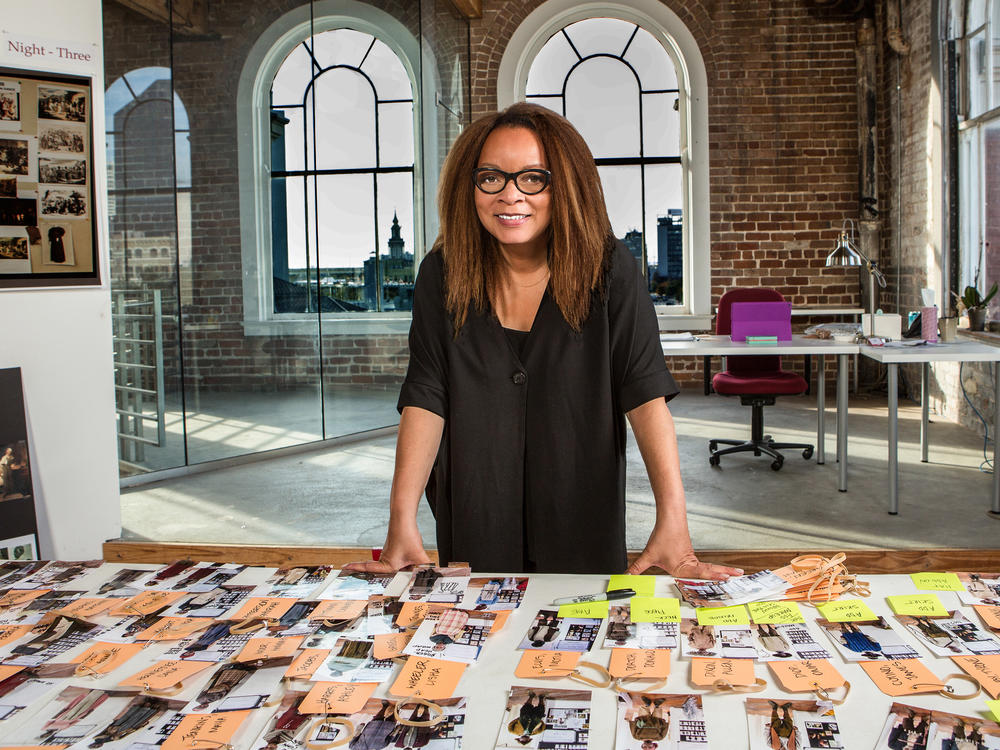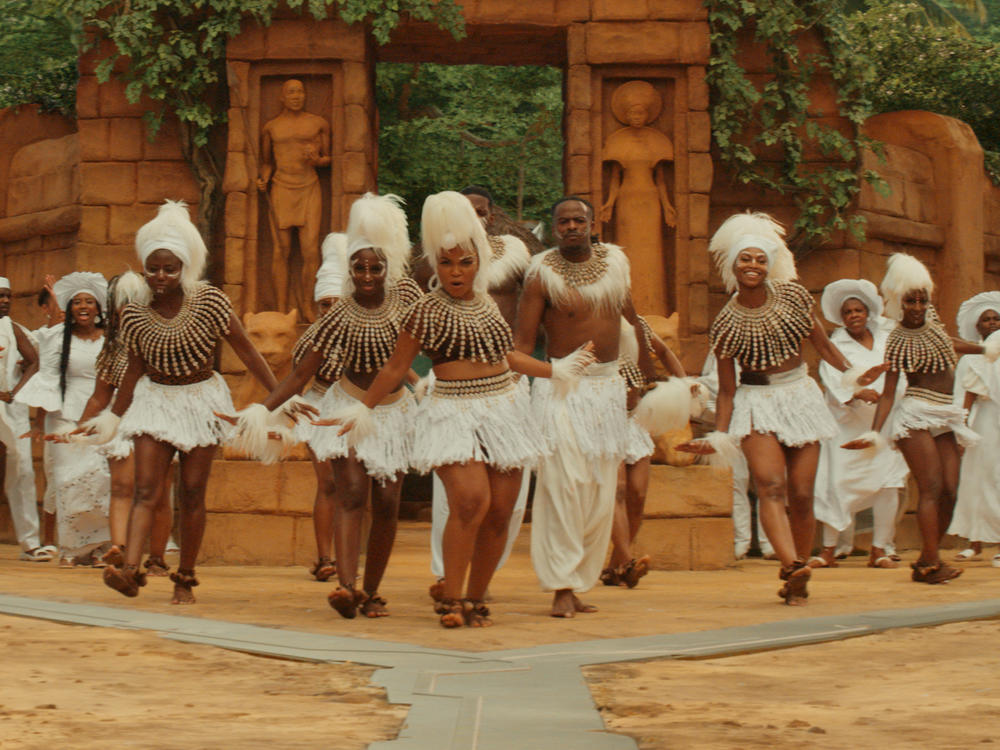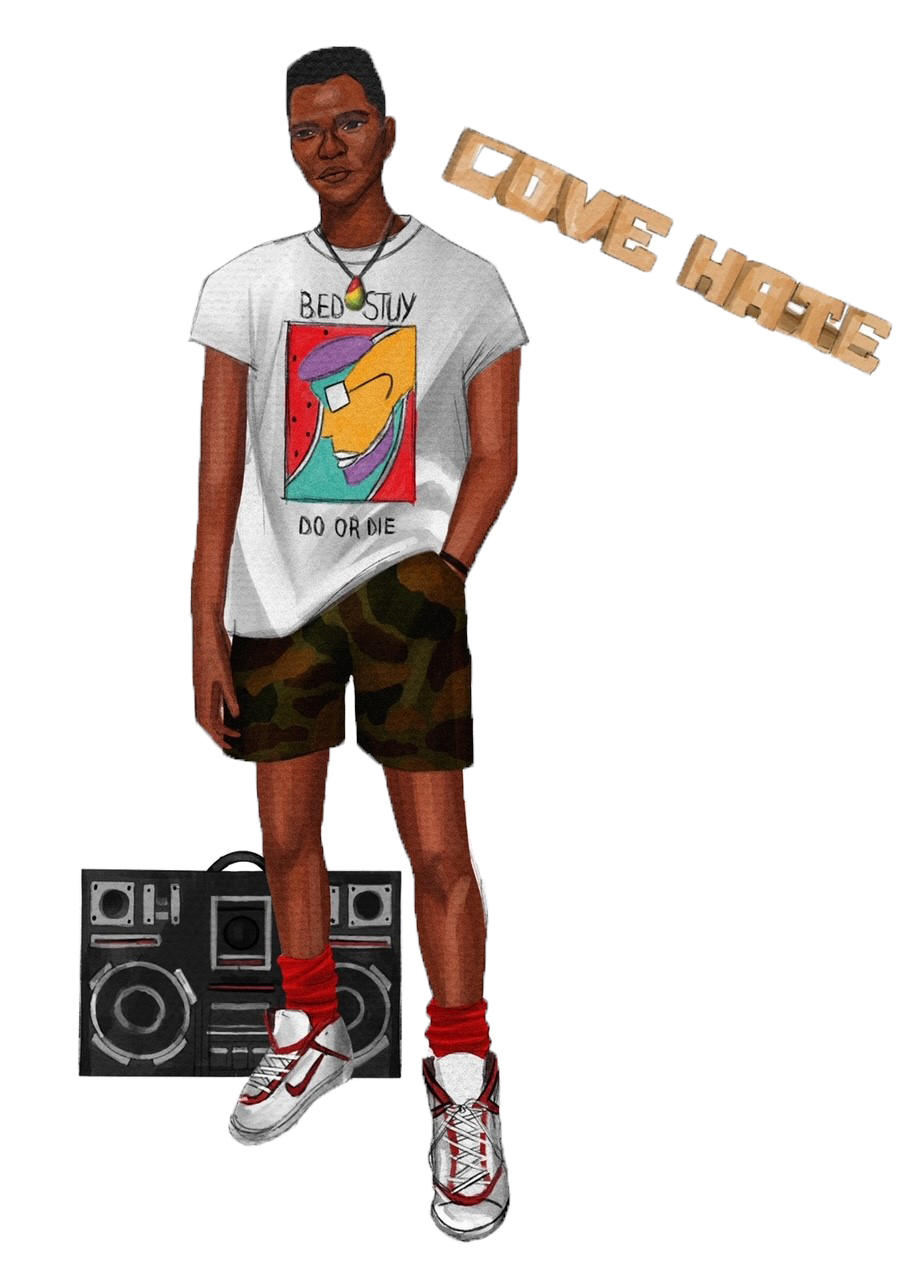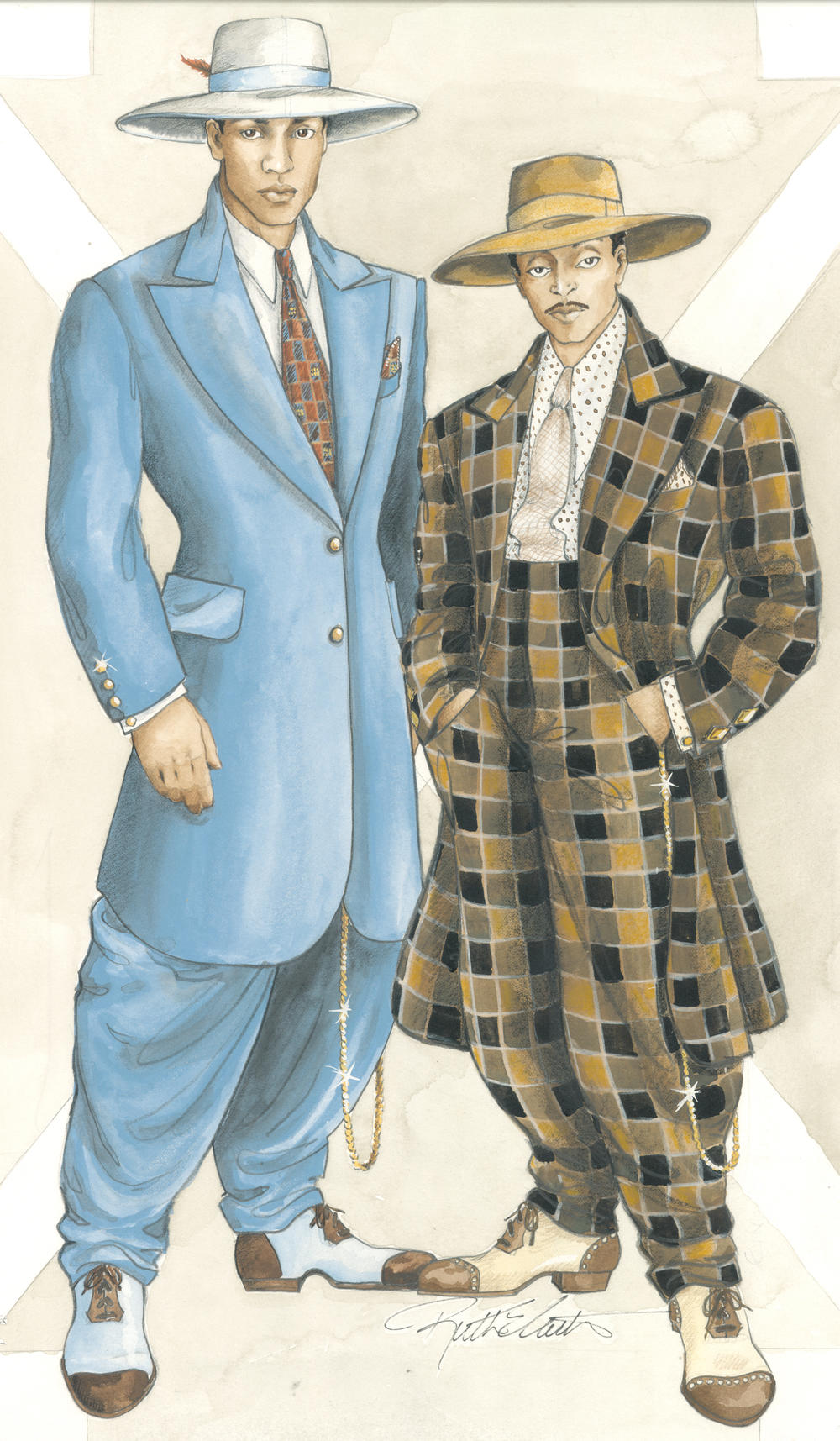Section Branding
Header Content
An Oscar-winning costume designer explains how clothes 'create a mood'
Primary Content
Over the past 30 years, Ruth E. Carter has produced some of the most iconic looks in the Black film canon and beyond, with credits that include Do the Right Thing, Malcolm X and Amistad. With Black Panther, Carter became the first Black person to win an Academy Award for costume design. Now she's nominated again for her work on that film's sequel, Wakanda Forever.
"I really love movies and I love Black history and I love telling stories of people," Carter says. "The history of Black America is something that I have been close to for a long time."
Carter's known for conducting extensive research to create costumes that help bring characters, scenes and storylines to life. For the Black Panther films, she studied the traditional practices and looks of different African tribes, then incorporated those elements into her work.
"We created lots of mood boards that showed you the different indigenous tribes and what that look like," she says. "There's thousands of tribes throughout the continent of Africa, and we picked eight or 12 of them to represent the tribes of Wakanda."
When Black Panther star Chadwick Boseman died of colon cancer in 2020, it was unclear whether the franchise would continue. Wakanda Forever opens with the funeral of Boseman's character, the beloved King T'Challa. In the movie, hundreds of mourners line the streets to watch the funeral procession. They're draped in white, and each tribe is distinguished by intricate beadwork, fur, turbans and other adornments. Cater says it was a powerful scene to watch being filmed.
"It was once everyone was together and dressed and ready and in line, that it hit you that this was to honor of Chadwick. And it was magnificent," she says.
Carter's forthcoming book, The Art of Ruth E. Carter: Costuming Black History and the Afrofuture, from Do the Right Thing to Black Panther, will be published by Chronicle Books in May 2023.
Interview highlights
On designing the look of the Dora Milaje, the women warrior group in Wakanda
It was very important that the materials not create a costume that looked too much like a costume. We really wanted it to be taken seriously. We didn't want it to be oversexualized, like the [way the] comics sometimes paint female warriors. We wanted them to be flat on the ground, in martial arts boots. We wanted them not to be in cheerleader skirts and triangle tops. [We wanted] their bodies protected, and also, in the making of it, it needed to honor the female form. So there is a harness that we created out of leather and in the spirit of the Himba tribe, in that this brown leather harness travels around the female form and honors it, honors the bust and the waist. It ends in a back skirt that we studded and put little rings on the edges, just as the Himba women do, as they stretch the calf leather and make these wonderful leather skirts that they also stud and put little rings on. And Ryan Coogler, the director, wanted the Dora Milaje to be heard before they were even seen. And the little rings emitted this lovely sound, even though they were deadly, you could hear them before you saw them.
On how our regular clothes are costumes
There's something that happens from the moment you take a garment from the store and you unpack it in your home and put it on. There is a way that you transform into that character that you expected to be when you took that price tag off and put that garment on your body. There is someone that you personify in that vision of yourself, in your mind, and there's also that vision of someone who we see, the representative of you. And that's where fashion stops and costume begins, because we create a mood for ourselves. We create a voice that we want to project to the world without us saying a word. And that's what costumes do. They communicate amongst each other. Either they're collaborative or they are in opposition. They say who you are or who you want to be or how you want to be perceived. And that's the part of clothing that can be so simple and yet so complicated.
On the vibrant costume design of Spike Lee's Do The Right Thing
We were an independent film. We were low budget. We had to make it work with product placement. [Nike] gave us so many sneakers and compression shorts and tank tops and stuff like that, but it was all very saturated color. And we were representing the hottest day of the year. We were representing a neighborhood in Bed-Stuy that I actually lived in while we were shooting. ... Brooklyn is the epitome of the African diaspora, where you see geles [head ties] and women from Africa in their traditional garb. ...
I had to be clever in that the African fabrics balanced out the athletic fabrics. So we made a lot of crop tops and shorts and ankara fabrics. And it did create this vibrant tableau of this neighborhood. ... When you think of Do the Right Thing, you really do think of a neighborhood that's vibrant and thriving and you can see the colors of the neighborhood. ... It was a vibrant, surrealistic protest film. And I think that's why it's standing the test of time, because it still feels and looks relevant to today, especially the storyline.
On her long collaborative relationship with Spike Lee
Spike and I both cared about our community deeply. We cared about our history deeply. There's such a shorthand that happens when you are speaking with someone who laughs at what you laugh at, who understands what they're looking at when you show them your ideas. There's a wonderful connection to culture and to the desire to show our community and represent each other in a way that we have experienced but we haven't seen. ... I don't think that I would be the same filmmaker without the experiences that I had with Spike.
On doing research for her first period piece, 1992's Malcolm X
The first thing that I wanted to do was to understand the man so I could build his life and costumes. I knew that he had been incarcerated in Massachusetts. ... They had pulled his files out of their archives and they were waiting for me in a cubicle at an empty desk for me to spend time with. I couldn't believe my eyes. I saw his original letters that he wrote to the commissioner asking to be transferred to another facility that had a bigger and better library. I saw his booking photos and I saw his penmanship. I felt really close to the person who had written by hand and touched this paper, these letters. And I also went to the university where the late Dr. Betty Shabazz taught. And I spoke with her face to face about her life and what she wore and about him. And so I felt like I could make those decisions confidently about what he might have worn in those times where he wasn't photographed or where he was at home with his family or where he was preparing for one of his great speeches.
On working with Jerry Seinfeld for the pilot of Seinfeld
Jerry was so organized and methodical. And I remember his apartment, how it was so well-appointed, and his closet was impeccable. I almost couldn't pick anything out for him to wear for the pilot because it was this low-budget thing and he was going to wear his own stuff. And he invited me over to pick some stuff out of his closet. And I was scared. But I did. And I was like, Wow, that was so totally cool that I experienced that.
Audio interview produced and edited by: Ann Marie Baldonado and Susan Nyakundi
Audio interview adapted to NPR.org by: Bridget Bentz, Molly Seavy-Nesper and Beth Novey
Copyright 2023 Fresh Air. To see more, visit Fresh Air.





